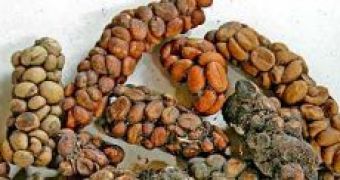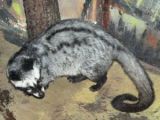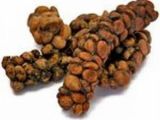Let's see which is the world's most expensive beverage.
It seems that a unique coffee, whose fresh beans are marketed at $110, and roasted at $175 a quarter pound. A cup would cost you $ 50. Where does this coffee come from? Well, from the ass of civetcat!
More precisely, Common Palm Civet Cat or Toddycat (Paradoxurus hermaphroditus), a small mammal from Southeast Asia, relative of the mongooses and very aficionado to fruits. This is stranger than fiction: why in the world is this coffee so expensive? Long regarded by the natives as pests, civet cats climb among the coffee trees eating only the ripest, reddest coffee cherries.
This animal is in fact a carnivorous (which eats a lot of rats and mice!) unable to digest the coffee beans and excretes them in its faeces on the jungle floor, where they are eagerly collected by the locals. Some time ago, brazen or disparate, or just lazy, locals gathered the beans, which come through the digestion process fairly intact, still wrapped in layers of the cherries' mucilage. This animal is seen as having medicinal properties in Asia, so some attributed to the beans aphrodisiac properties. The beans have a strong coffee smell, but a distinct flavor.
The enzymes in the animals' stomachs, though, appear to add something unique to the coffee's flavor through fermentation. Coffee drinkers in the developed world are going bananas over the brew.
This coffee is in such short supply, just 500 lb of it is harvested a year, so it is virtually impossible to get hold of it in Britain and has only limited availability in the United States and Japan. The brew first came to light hundreds of years ago, when Europeans sampled it on the Indonesian isles of Java, Sumatra and Sulawesi.
Scientists researched the phenomenon that produces these beans. Various digestive biochemicals are actually penetrating the outer coffee cherry and reaching the bean surface, where a chemical color change takes place, so the civetcat coffee is yellowish.
The internal fermentation adds a unique flavor to the beans, described as "earthy, musty, syrupy, gamy, smooth and rich with jungle and chocolate, molasses and tobacco undertones", "smoky, bitter and rather nice".
The beans become harder and more brittle, with an extremely finely perforated outer surface, and have a lower protein content, resulting a less-bitter, superior taste coffee, as proteins are those that make coffee bitter during the roasting process. During digestion, proteins solved are leached out of the bean.
Although blinded, human tasters could find little difference in the overall flavor and aroma of the beans; an electronic nose machine could detect that the aroma of the civet coffee beans is different.
Is the coffee, having traveled trough an animal's digestive track, safe to drink?
The civet beans on the market are actually quite clean, as they are extensively washed under running water after collection, which dislodges bacteria. Some think that the renown of this coffee is a bogus and the weirdness of the product sells it. But - as the economists would say - where there is a demand, there will emerge a supplier. Some are afraid that purchasing catbuttcoffee, animal cruelty will flourish, because due to the high prices, some of the supply now comes from captive force-fed animals. And some countries, outside the native land of the civetcat, like East African nations, plan to enter into this commerce. In some area of its range, civetcats are now rare because their meat is considered a delicacy (in China, Vietnam), despite the fact that SARS epidemics seems to have emerged from civetcat meat consumption.

 14 DAY TRIAL //
14 DAY TRIAL // 

